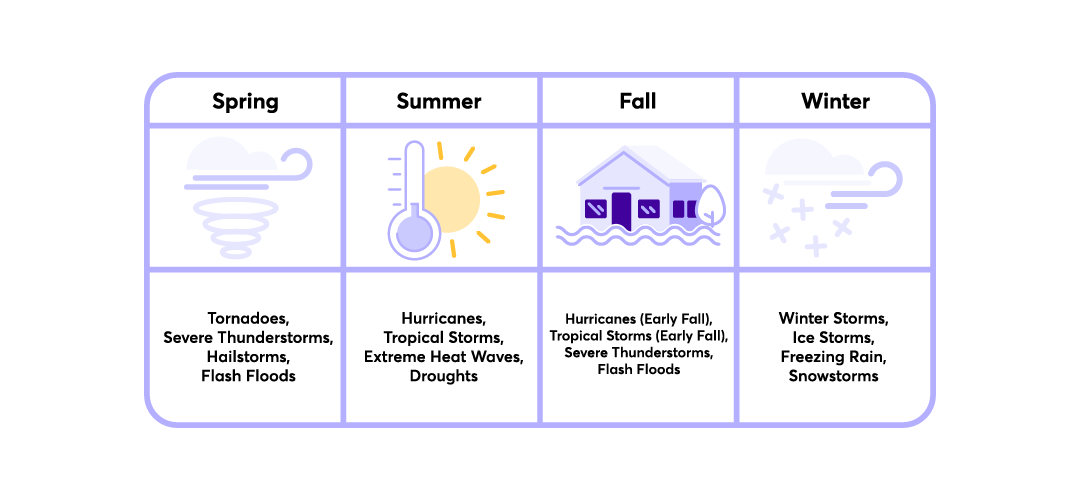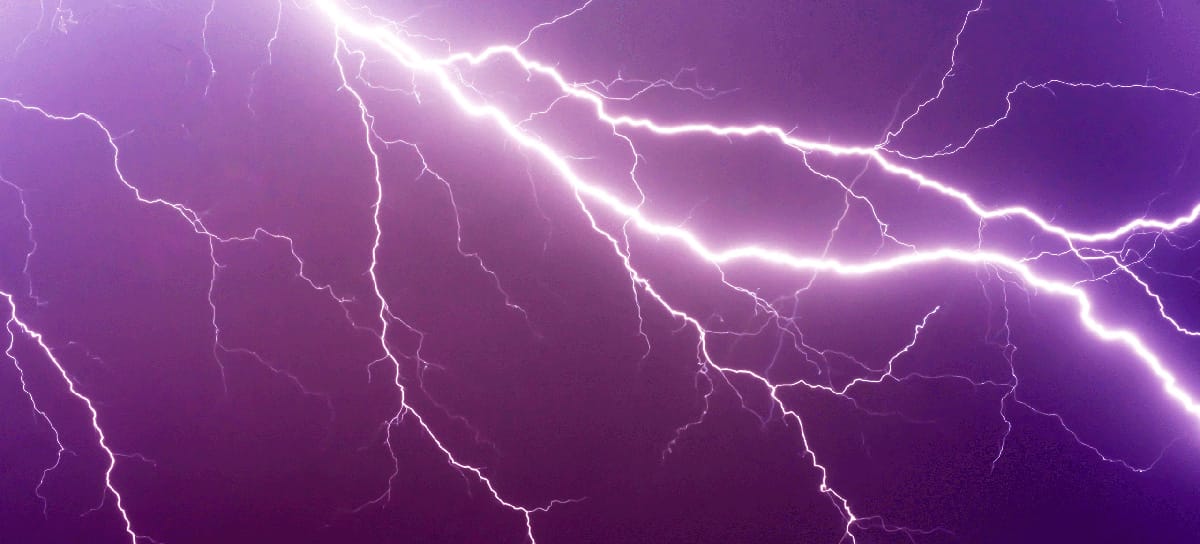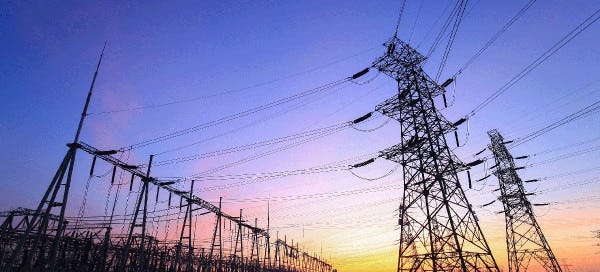Because our state is so big and has so many different types of geography – from deserts to prairies, the Gulf Coast to Hill Country – we also have a huge range of weather conditions. Out West, Texans see cold winters with low humidity, while the eastern two thirds weather a subtropical climate with occasional cold fronts and hot and humid summers. The mountains are the driest part of the Lone Star State, the southeast is wettest. And in some situations, the weather turns severe. In this article, we’ll explore the different kinds of severe weather you might find in Texas, and how to prepare for them.
Most Common Types of Severe Weather in Texas
Severe weather in Texas takes many forms. Here are the ones most commonly experienced:
Severe Thunderstorms
Tornadoes
Tropical Storms
Hurricanes
Hailstorms
Flash Floods
Ice Storms
Snowstorms
Extreme Heat Waves
Storms in Texas
Thunderstorms are most common in our spring and summer months. A thunderstorm is classified as severe by the National Weather Service if it produces winds over 58 miles per hour and hail at least an inch in diameter. Heavy rains, lightning strikes, strong winds, and flash flooding all create real risks for residents. Our state also experiences more hail than any other and three to four hurricanes every year – and because we’re part of Tornado Alley, storms can turn into twisters with little notice.
Winters in Texas
The winter months can bring frigid temperatures, ice and snow – as was the case in February 2021, when Winter Storm Uri impacted all 254 counties in the state and millions of people lost power. Because of climate change, winter storms could become even more common and severe. For more on how climate change is impacting our winters, read our article on Climate Change and Texas Winter Storms: Understanding the Growing Challenges.
Summers in Texas
And let’s not forget about the heat. Climate change is also impacting our summers: in 2023, a treacherous heat wave covered Texas, making the year the state’s second hottest summer on record by average temperature, and most of its most extreme temperatures in terms of days that reached more than 100 degrees.
Severe Weather by Season

What to Expect in Texas When Severe Weather Strikes
When the weather turns really bad, it can significantly disrupt life. Lines of communication from internet connectivity to cell service can go down. Roads can be closed and travel delayed. Emergency services can be strained because of high demand by neighbors needing assistance. And your property can even be damaged by hair, lightning, trees that are blown over by high winds, or even catastrophic events like tornadoes and hurricanes.
The power can also go out. When extreme heat happens, the demand for electricity can skyrocket and lead to crashes. But outages can also occur in the winter: because our state’s power grid was designed to experience the highest demand for electricity during summer months, many of its component parts have not been winterized. When Winter Storm Uri hit, infrastructure and equipment for coal, natural gas, nuclear, wind, and solar generating froze, as did substations and transformers that bring power to our homes.
How to Prepare for Storms
Stay Informed
Real-time grid and power outage updates are often available from your local utility company, as are email alerts from the Electric Reliability Council of Texas (ERCOT) – which you can sign up for at ercot.com/news.
Consider a Backup Power Option
A generator can be a good idea for providing backup power during an outage, but it’s important that you use it wisely. Because generators are powered by gasoline – which produces carbon monoxide – it’s important to place the generator outside in a well-ventilated area, at least 15 feet away from doors and windows. Never use a generator inside, even in a garage or barn, and install carbon monoxide detectors on each floor of your home. You also want to keep a generator dry, and if it gets wet then don’t start it up until it’s dry to avoid the risk of electrocution.
Have an Emergency Kit
One inexpensive but essential way to prepare for outages is having an emergency kit at hand. Be sure to include bottles (or jugs) of water, nonperishable foods that don’t need to be cooked, hand- or solar-powered chargers for your cell phones, and a first aid kit. You can even include books and board games!
Make a Family Communication Plan
Be certain that everyone in your family knows the address of a meeting place and discuss the best ways to get there. Also write down phone numbers for emergency services, utilities, service providers, doctors, veterinarians, and insurance companies.
Whom to Contact If an Outage Happens
Texas electricity companies like Rhythm Energy do not have control over power outages, but we are here to help make sure you have the power you want and need. If you live in Texas and experience an outage, reach out to your utility company: find phone numbers and helpful tips at this link.
For more comprehensive guides on how to prepare for extreme weather in Texas, check out our articles on Bracing for the Cold and 10 Simple Ways to Conserve Energy During Extreme Heat.
FAQs
How quickly does power usually get restored after an outage in Texas?
Most power outages are restored within ours, but those that are caused by violent or severe weather that damage electrical lines and infrastructure can linger for days. This is why it’s important to have an emergency kit and family communication plan.
How can I safely use a gasoline generator during a power outage caused by severe weather?
Gasoline generators produce carbon monoxide, so be sure to operate your generator only outside, at least 15 feet away from doors and windows, and to have a carbon monoxide detector on every floor of your home. Also, never use a wet generator as it can be a risk of electric shock.
How can customers stay informed about power outages during severe storms?
Sign up to receive real-time grid and power outage updates by email, at ercot.com/news.
How can customers report power outages and downed power lines during severe weather?
Contact your Transmission Distribution and Service Provider (utility) as soon as possible. You can find the right phone number for your service area here.




